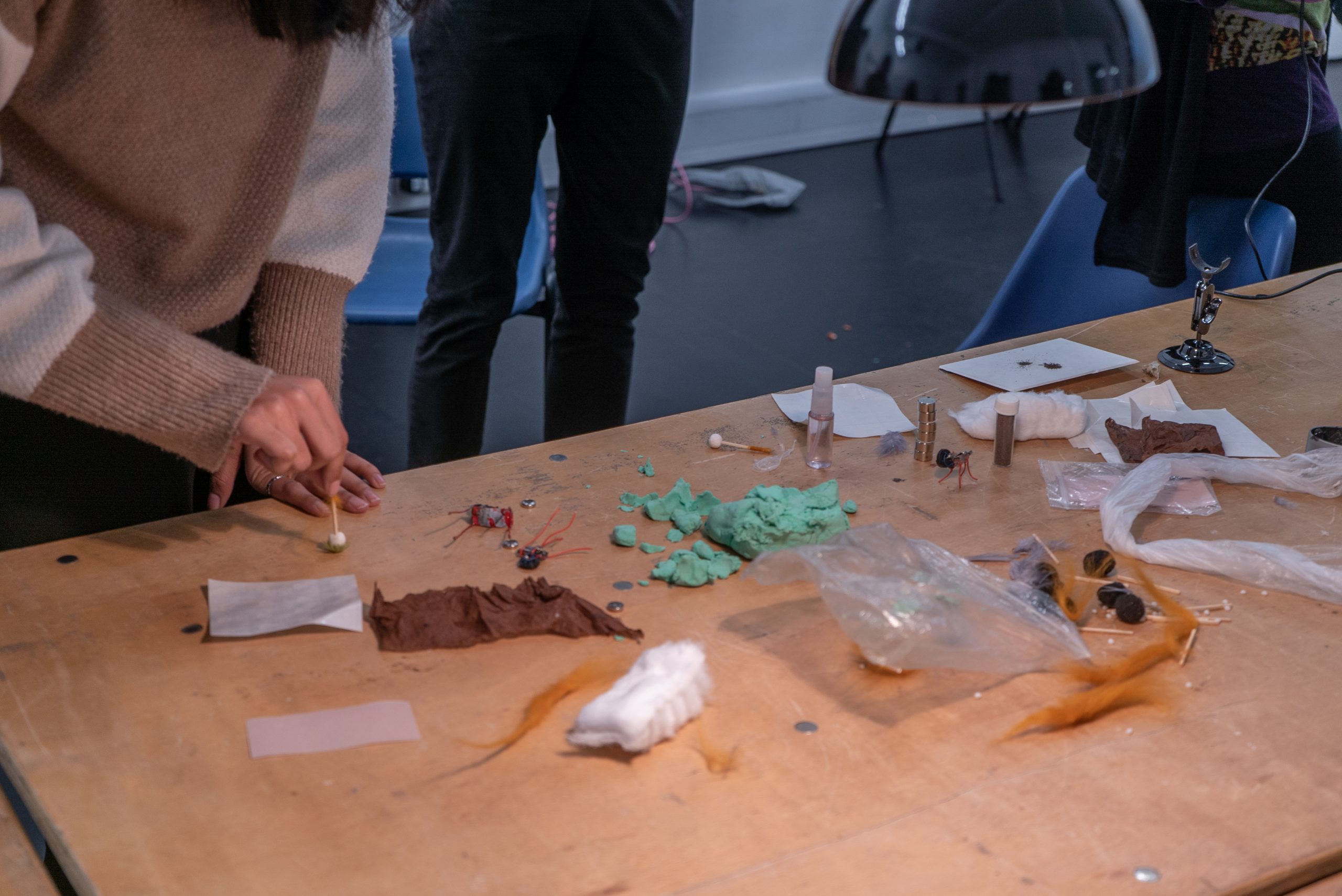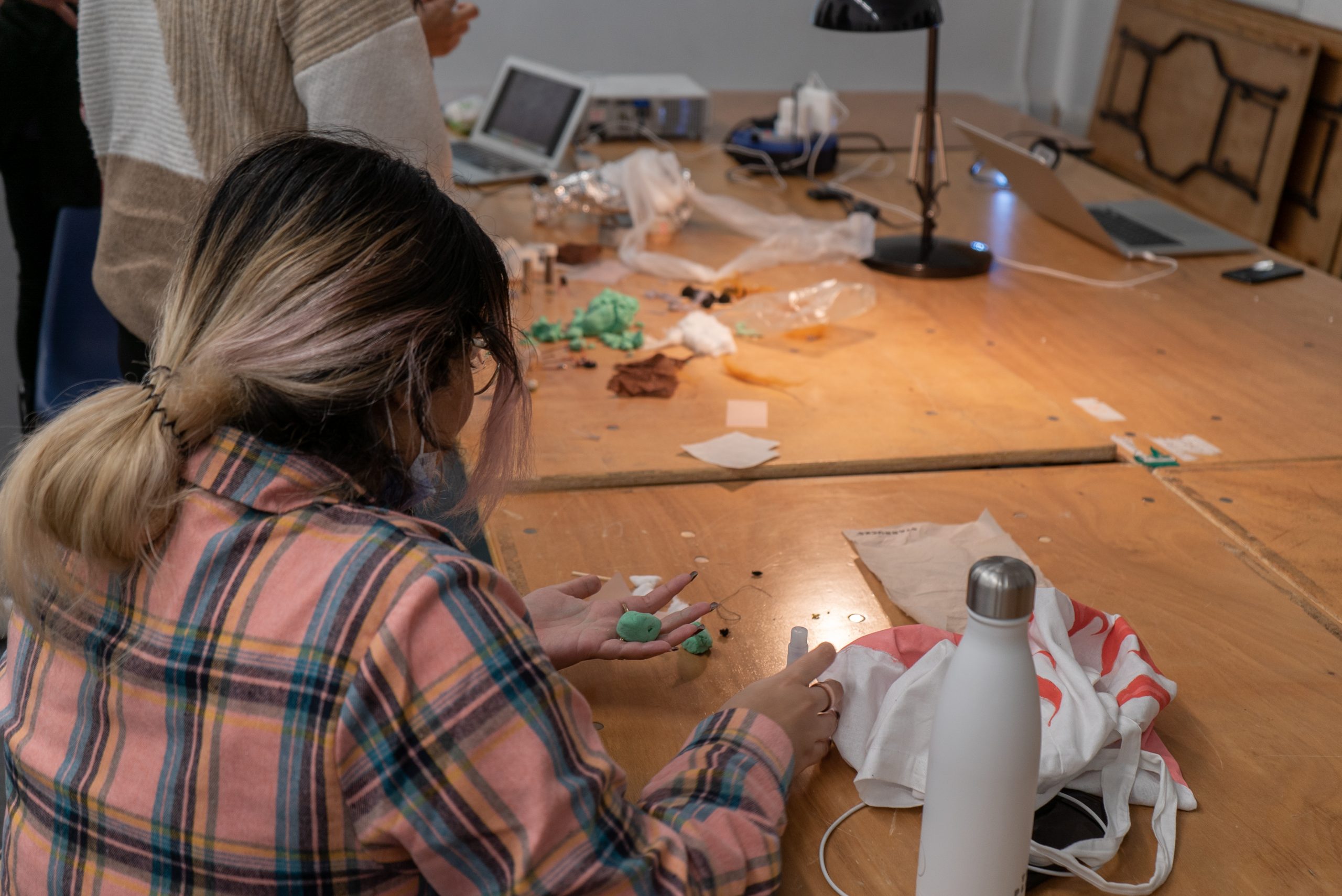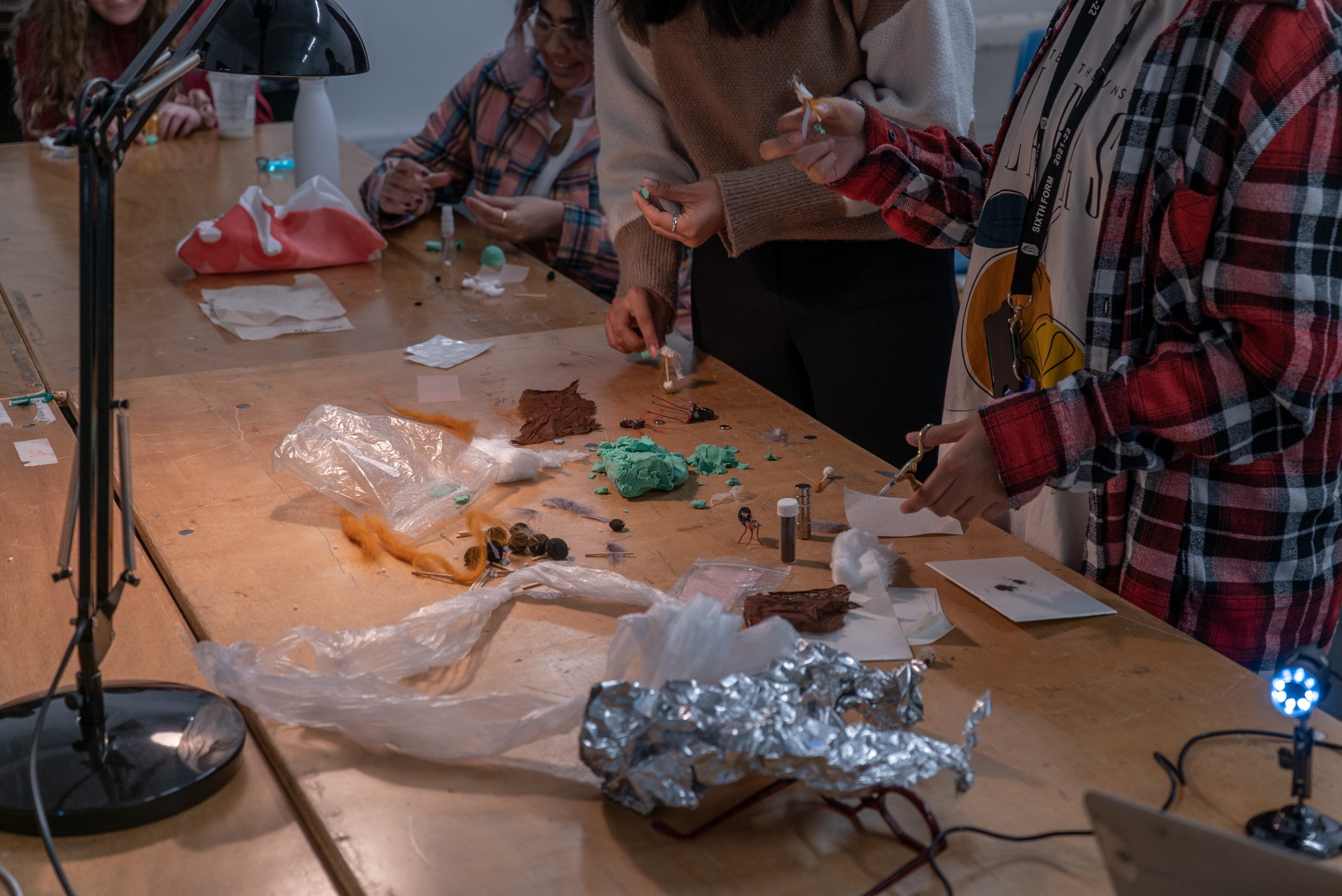How things behave under the fingers
Artist Tim Spooner reflects on a workshop he led with Artsadmin Youth.
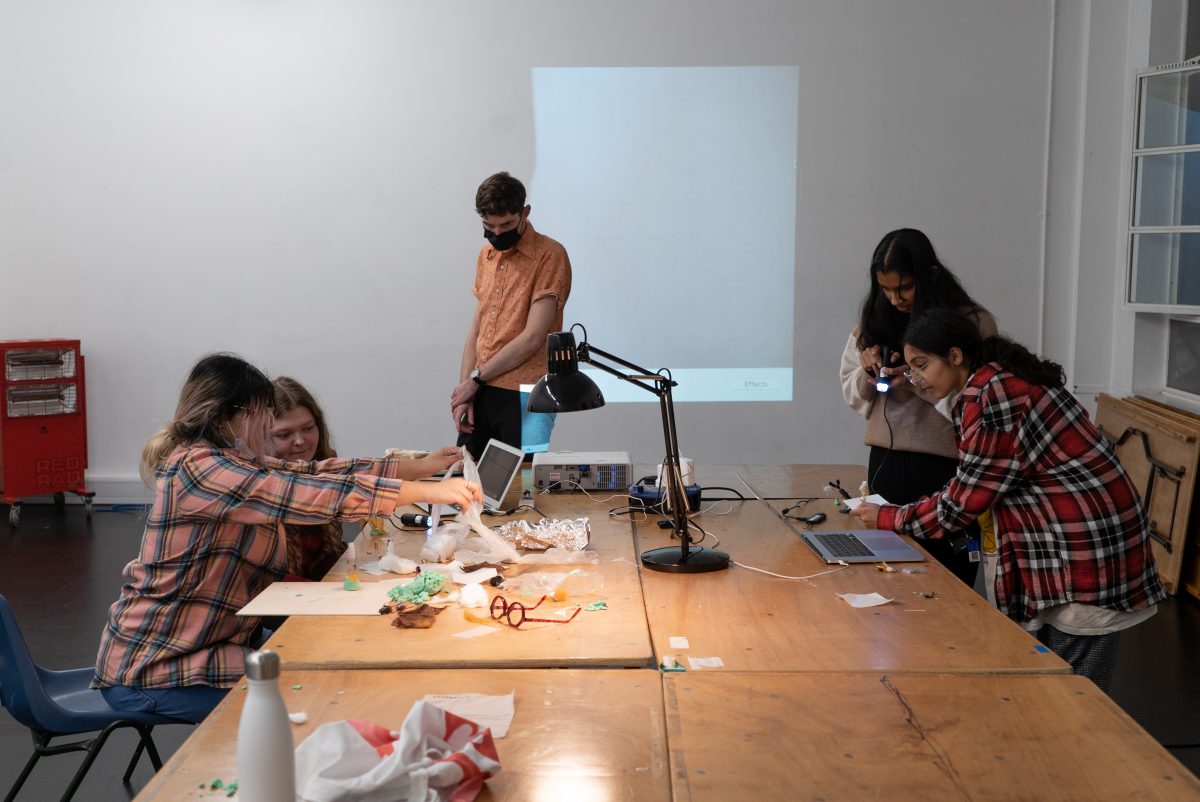
In the autumn of last year I led a workshop with Artsadmin Youth. The idea of this workshop was that it would be a meeting of people and materials. Together we would experiment with a collection of particular materials that I brought along. We would listen to the materials and get to know them.
Artsadmin Youth is open to people who are curious about art, but they don’t have to be sure about how and if they want to be an artist, or what kind of art they’re interested in, or how art might fit into what they want to do. So I wanted to make this workshop about the basic curiosity that underlies the work that I do, rather than about how to do or make anything in particular.
When I was the age of the participants in this workshop, I was doing A-Levels. I was excited by the idea of live performance and also with making small things, sculptures and paintings, but I didn’t really know what I was doing and how that all fitted together. It took me a while to fit it all together and to work out that what interested me specifically was the particularities of materials. How materials behave under the fingers when I’m making something, or how they behave in front of an audience.
Now all of my work starts with giving attention to materials. Pushing the attention to a smaller scale, just beyond the normal scale of looking. Doing this reveals tendencies, desires and movements that form the world and us.
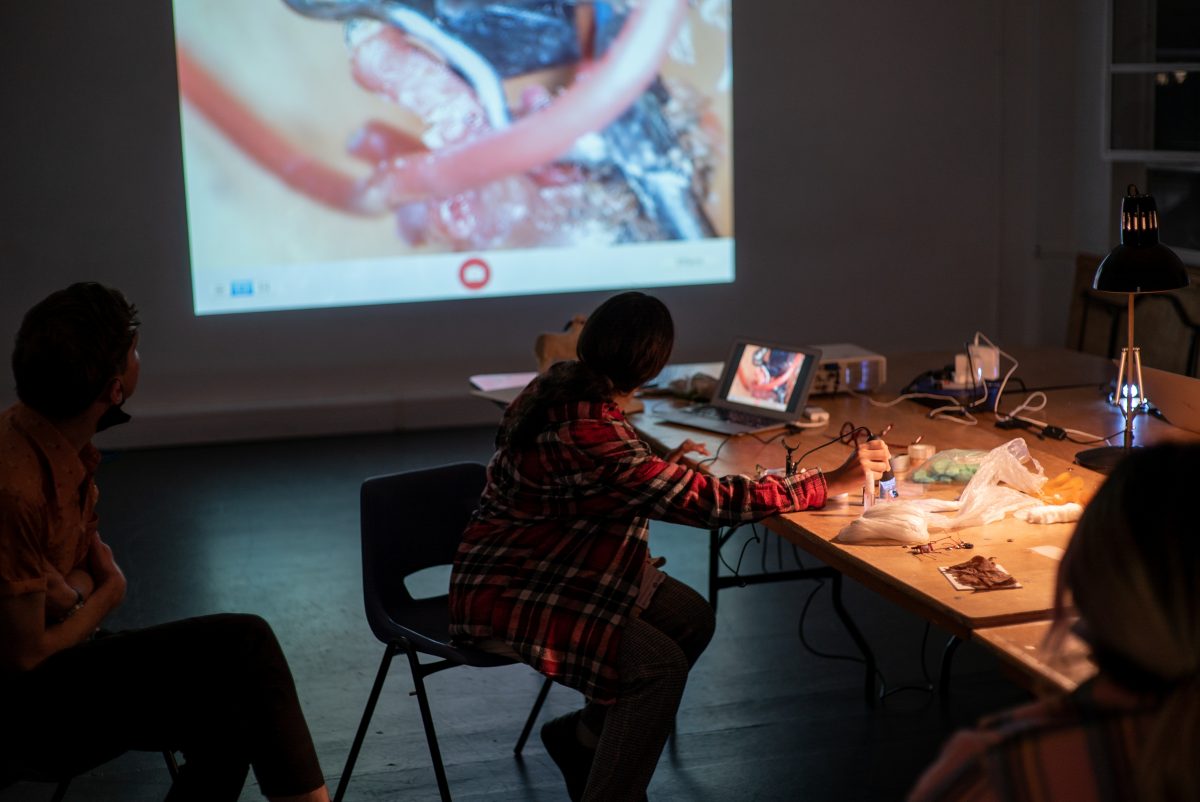
In the workshop we started by holding the different materials in our hands and exploring them with our fingertips. We tested them, moulded them and broke them. We looked at them closely, through microscopes. We looked at them in combination with other materials and the ways they supported or disagreed with each other. We tried to find out what they wanted or tended to do. Different people were drawn to different materials. I was very interested in what it was about a particular thing that made it attractive to a particular person. I could see conversations happening between people and things.
One participant was exploring a material which seemed to keep agreeing with her and then refusing her. She was trying to mould it into a particular form, and up to a certain point it would hold, and then cracks would form and it would crumble. Then she would try to re-form it, trying subtly different ways of using her fingers to mould the material, and other techniques to encourage the shape to stay together. Then it would break apart again, in a different way. It was like watching a slow argument.
Two other participants were focussed on stacking different materials, making tiny towers of things, finding places and ways that the objects could join with each other. The top of each tower tended to be an object that was so fragile that nothing could be stacked further on top of it: a tiny piece of stretched jagged plastic or a little cloud of cotton wool fibres waving in air currents. The fragility of these towers required the two participants to act with extreme attention and delicacy. Their hands and eyes were zoomed in to this unusual scale.
These are my memories of the different materials and how they behaved with us:
One of the materials could be broken apart into fibres that were so small and light they would hang in the air and be carried around by air currents.
One of the materials could be stretched and broken. When we pulled it, it would stretch very thin before it would break, and when it did break it would break into stretched jagged peaks. Each stretched peak got thinner and thinner, impossibly thin towards the top, the point where stretching gave over to breaking.
One of the materials was susceptible to tiny movements. It would move in response to tiny movements in the air or in our hands when we were holding it. Every tiny movement it made was very visible to us because the material was very shiny and very crumpled. Every movement was multiplied in all the vibrating points of reflected light.
One of the materials would curl up when it got damp. Not too wet, but when we just got it slightly damp, it would slowly curl up, spiralling into a tight cylinder. Its curling movement wasn’t smooth, it would curl in little shocked increments. As it spiralled in on itself it would often catch on itself and this would stop it for a bit, until the drive to curling pushed it past the point of catching and it would continue spiralling in. After a while it would slowly dry out and it would slowly uncurl, but it didn’t return quite to its original state. It remained puckered and uneven, the memory of having been damp.
One of the materials kept falling apart. We tried to form it into various different shapes and to use it as part of structures and to stick other materials together with it. But it would always fall apart. Sometimes it would fall apart straight away and sometimes it would hold its shape for quite a while. Getting it damp would make it hold together for longer. But it would always fall apart eventually. It would crumble into little bits.
By spending time with these materials, by zooming into them, by having conversations with them and by adapting our behaviours to match them, I feel like the participants and and I all understood slightly more about the world by the end of the workshop. We saw its surfaces more intimately, we found new kinds of aliveness in it, and we learned that our relationship with it can be back and forth, a negotiation or an argument. The experiments were very delicate and attentive, but the overall aim of the workshop was quite open, based only on curiosity and exploration. For me, these kind of focussed experiments force a change of perspective which leads to ideas for artworks and performances, but for others they could just as easily lead to other things. I hope the workshop helped all of us develop our ability to identify new scales, layers, textures and flavours living around us and on us and that are part of us.
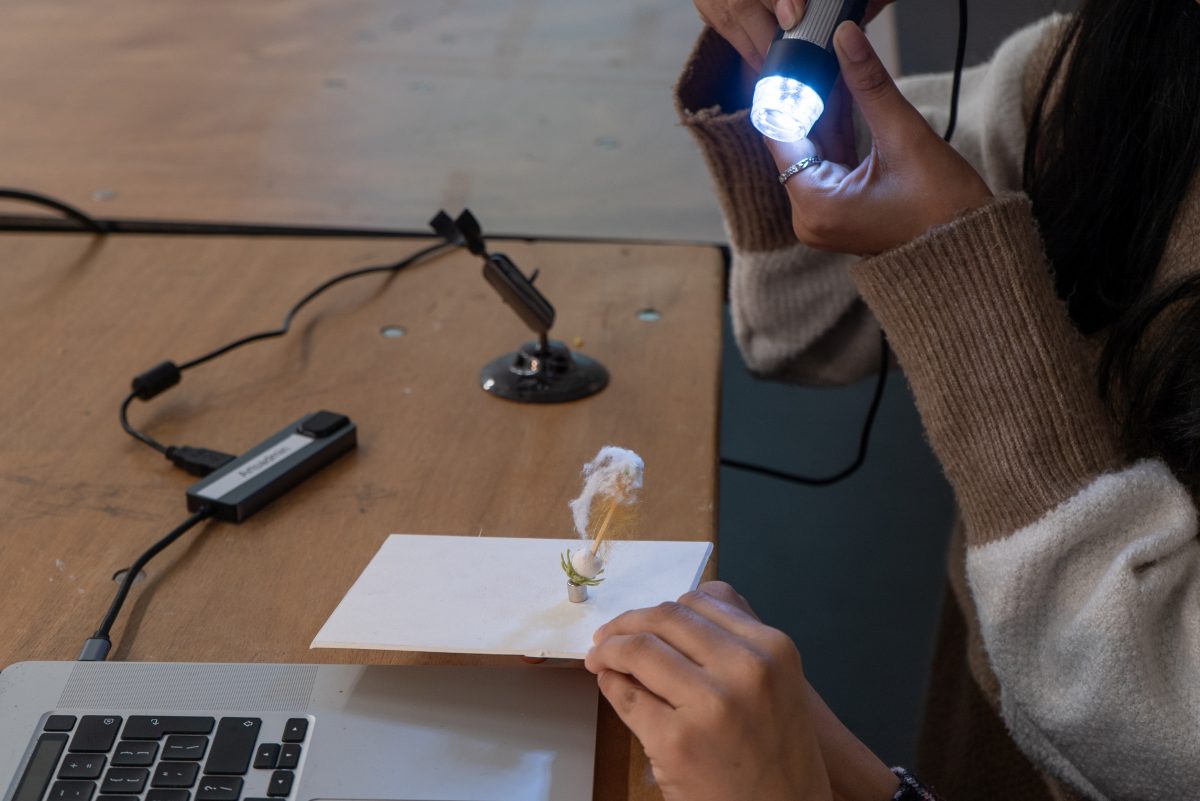
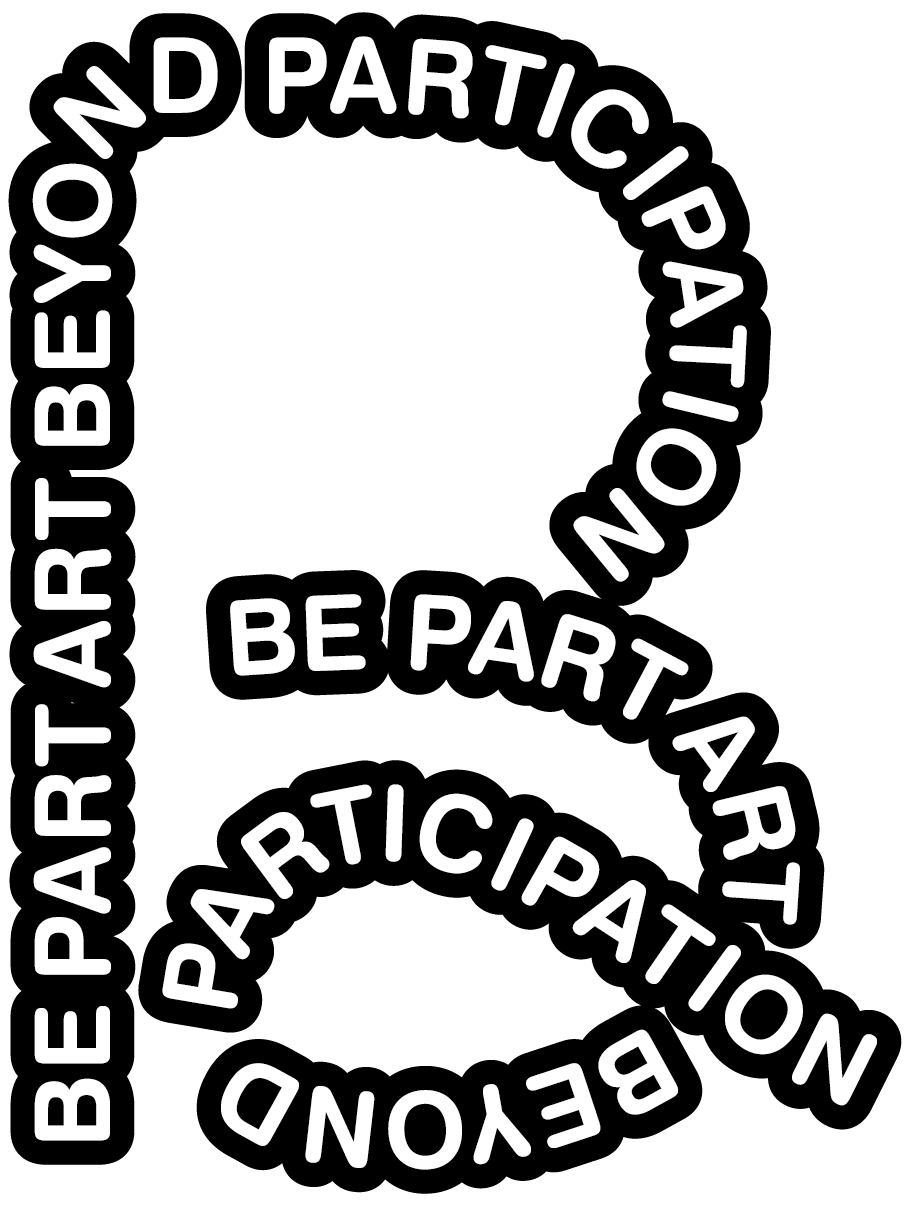
Artsadmin Youth is our free creative arts programme for 16-21 year olds who live/study in East London.
Produced by Artsadmin, with support from BE PART through the Creative Europe programme of the European Union, The Simon Gibson Charitable Trust and the Allen & Overy Ben Ogden Memorial Fund.

